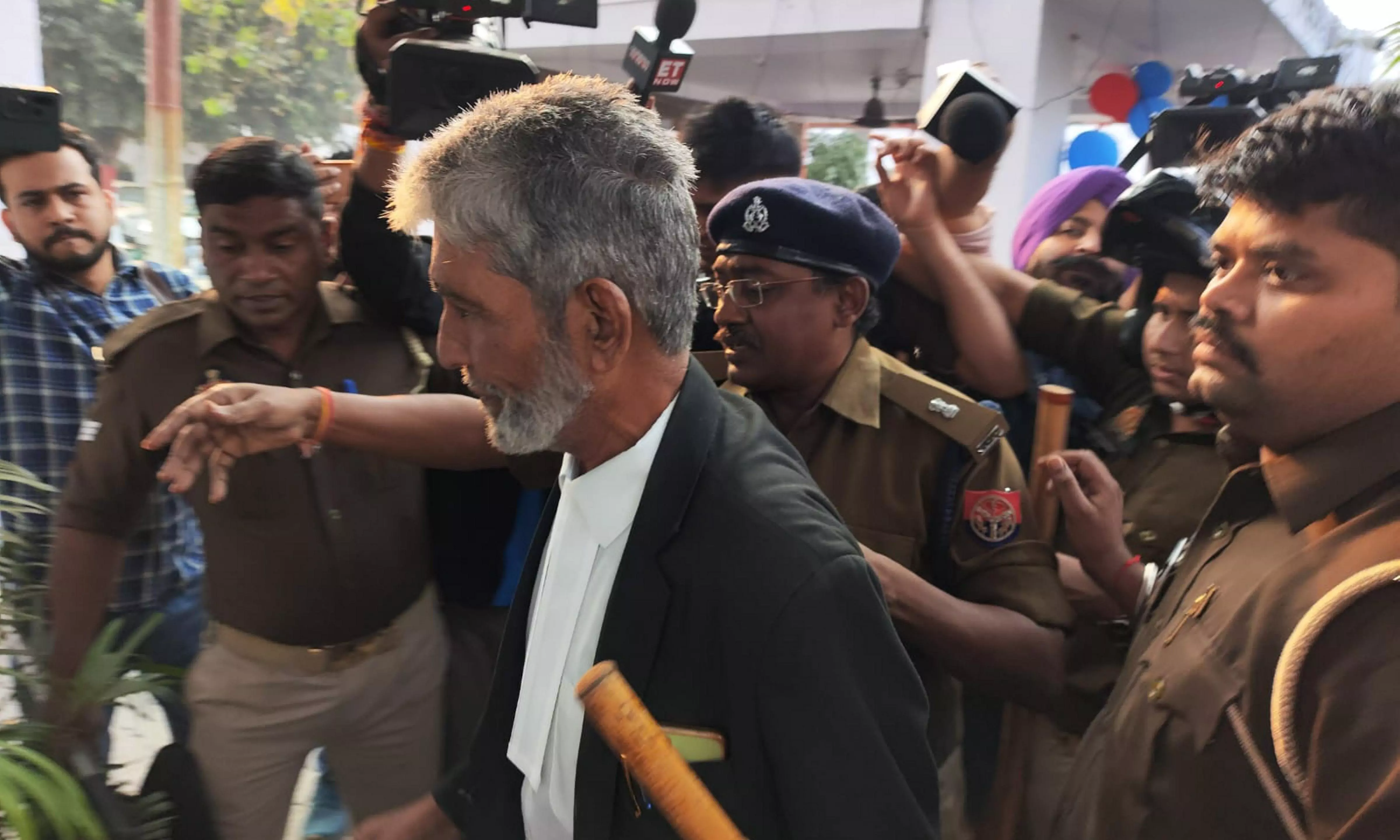
Sambhal violence: A page from Yogi Adityanath’s polarisation playbook?
Recent deaths, triggered by survey of Shahi Jama Masjid, have shed light on political polarisation, judicial impartiality, and alienation of Muslim community

The recent violence in Sambhal, Uttar Pradesh, stemming from a controversial survey of the Shahi Jama Masjid, has left four people dead and stirred a nationwide debate on the political motives and administrative actions surrounding the incident.
The Federal’s latest episode of Capital Beat, hosted by Neelu Vyas, explored whether this unrest is part of Uttar Pradesh Chief Minister Yogi Adityanath’s polarising politics.
The incident
The unrest began on Sunday (November 24), when protesters opposed a court-mandated survey of the Shahi Jama Masjid. This survey followed a petition claiming the mosque, constructed during the Mughal era, was built over a demolished temple.
Despite a previous survey on November 19, a second survey was carried out, escalating tensions. Protesters clashed with the police, resulting in stone-pelting, vehicle arson, and police retaliation with tear gas.
Among the deceased were four young men, and FIRs have been filed against six individuals, including Samajwadi Party MP Ziaur Rahman Bur and local MLA Iqbal Mehmood’s son, accused of inciting violence. The developments have triggered a bitter political blame game, with opposition parties accusing the BJP government of engineering the riots to consolidate its Hindutva agenda.
Judiciary and law enforcement: enablers or neutral actors?
Panelist Shaira Naim, a veteran journalist, raised concerns about the judicial process and its apparent disregard for the Places of Worship Act, 1991. The Act prohibits altering the religious character of any place of worship as it stood on August 15, 1947.
“The judiciary’s swift action — ordering a survey without hearing both parties — defies logic. This raises questions about the impartiality of the judicial process,” she remarked.
The Supreme Court, in its Ayodhya verdict, underscored the importance of the Places of Worship Act, stating that “history and its wrongs shall not be used to oppress the present and the future.” Yet, similar petitions, such as those in the Gyanvapi mosque case, continue to be entertained, undermining secular principles.
Also Watch: Sambhal violence: Is it part of Yogi's brazen politics? | Capital Beat
Political implications: An old playbook?
The Federal's senior political journalist Puneet Nicholas Yadav linked the unrest to a pattern of Hindutva politics aimed at polarising voters. “The BJP is following its strategy of weaponising historical grievances for political gain. While Yogi Adityanath’s brazen politics may be more overt, it aligns with the BJP’s broader agenda,” he noted.
Yadav also highlighted the role of opposition parties, particularly the Congress, in failing to address such incidents decisively.
“The silence of the opposition emboldens the ruling party. When opposition leaders fail to speak up, the Muslim community is left without recourse,” he said, adding that the absence of robust opposition enables the normalisation of such actions.
A community cornered
Social activist Raza Haider shed light on the alienation of the Muslim community, which he attributed to systemic marginalisation and loss of faith in democratic institutions. “Youth are disillusioned. When every institution — the judiciary, police, and political opposition — fails to protect their rights, they lose hope,” he explained.
Haider emphasised the need for introspection and peaceful resistance within the community. “Leaders must guide the community towards non-violent forms of protest and focus on long-term strategies like education and social cohesion. Otherwise, this cycle of provocation and retaliation will continue.”
Beyond Sambhal: A broader pattern
The Sambhal violence is not an isolated incident but part of a recurring pattern in Uttar Pradesh. From the CAA-NRC protests to the Gyanvapi mosque dispute, the state has repeatedly witnessed communal unrest triggered by disputes over religious sites. The BJP has often been accused of using such incidents to galvanise its Hindu vote base while deflecting attention from governance issues.
The Union government’s slogan of “Sabka Saath, Sabka Vikas” (inclusive growth) contrasts starkly with the state government’s actions, which critics argue deepen divisions. The muted response of opposition parties further compounds the problem, leaving the marginalised Muslim community vulnerable.
Also Read: SP, BJP spar over Sambhal violence; Akhilesh calls it a 'riot orchestrated by govt'
Communal polarisation: A strategy with dire consequences
The Sambhal violence reflects a deeper crisis in India’s democracy, where judicial processes, law enforcement, and political strategies are increasingly seen as tools for majoritarian politics. With general elections approaching, the question remains: how long will communal polarisation continue to serve as a diversion from pressing governance issues?
As Raza Haider aptly put it, “The design will persist unless there is a collective effort — legal, political, and social — to address these provocations. Otherwise, the repercussions will extend far beyond Sambhal.”
(The content above has been generated using a fine-tuned AI model. To ensure accuracy, quality, and editorial integrity, we employ a Human-In-The-Loop (HITL) process. While AI assists in creating the initial draft, our experienced editorial team carefully reviews, edits, and refines the content before publication. At The Federal, we combine the efficiency of AI with the expertise of human editors to deliver reliable and insightful journalism.)

